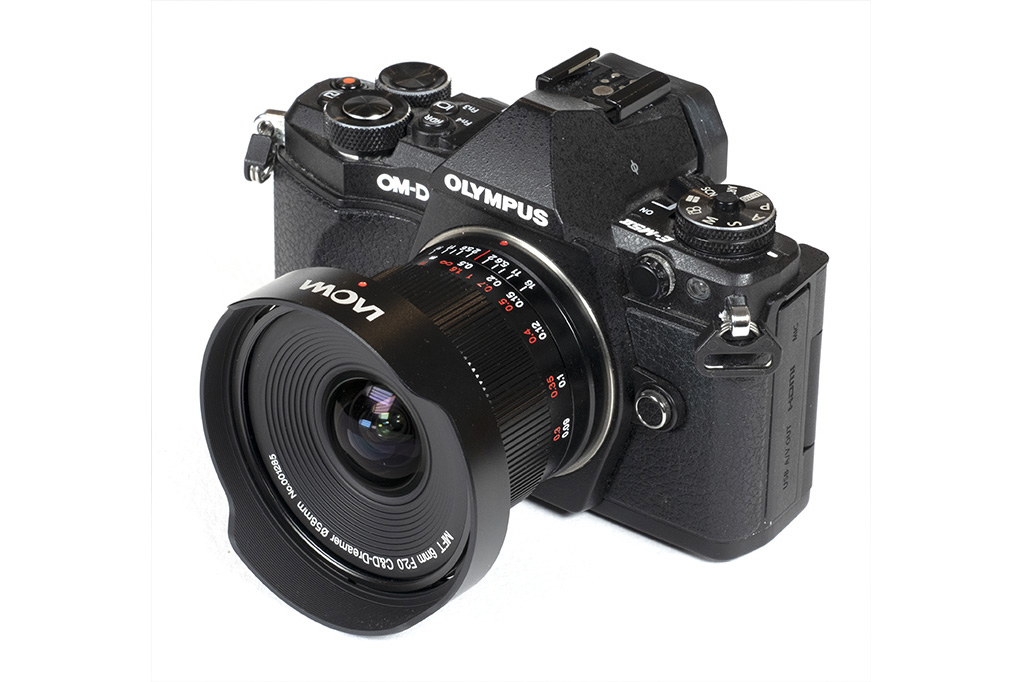Review by Klaus Schroiff, published March 2023
Introduction
The release of the Panasonic/Leica DG Summilux 9mm f/1.7 ASPH killed a lot of the market of the emerging Chinese players in the ultra-wide segment – wide(r), fast, small, and affordable were important value propositions for them, and some of this is now basically owned by Panasonic. So what to do when facing the inevitable? You go even more extreme. Meet the Laowa 6mm f/2 Zero-D MFT. On paper, a difference of 3mm may not sound impressive, but it’s far from insignificant in terms of field-of-view. We are talking about 112° vs 90° here. Short of fisheye lenses, the Laowa 6mm f/2 MFT is now also the widest option in the MFT system. And it’s pretty affordable, too, at “just” $499.
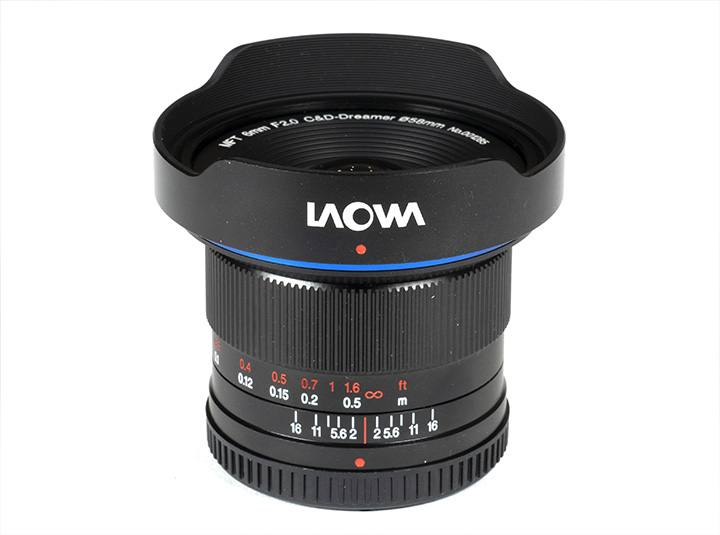
Laowa lenses have always featured an impressive build quality, and the Laowa 6mm f/2 Zero-D MFT is no exception. The lens body is made of metal with a buttery smooth focus ring. Speaking of focusing – it doesn’t offer an AF motor. This may not be ideal, but it doesn’t matter too much at this focal length. That being said, it’s still worth checking how your lens is calibrated with respect to the distance marks printed on the lens barrel. Sometimes, this is a little off. While the lens doesn’t offer AF, it does have electronic contacts, so you can (and have to) control the aperture via the camera body. Unlike many ultra-wide lenses, the Laowa doesn’t have a bulb-like front element and accepts (58mm) filters. There’s a (metal) built-in lens hood. It’s not overly deep but still deep enough to make attaching the lens cap a fiddly task.
EXIF data is provided; thus, while the lens has no image stabilizer, the correct focal length is transmitted to the camera for in-camera stabilization. It’s worth noting that the Laowa 6mm f/2 Zero-D MFT can focus down to just 9cm. The resulting max object magnification of 1:5.5 may not be in macro territory yet, but it certainly adds some versatility for close-ups with a dramatic perspective.
| Specifications | |
|---|---|
| Equiv. focal length (full-format) | “12mm” (in terms of field-of-view) |
| Equiv. aperture (full-format) | “f/4” (in terms of depth-of-field) |
| Optical construction | 13 elements in 9 groups (4xED, 2x aspherical elements) |
| Number of aperture blades | 5 |
| min. focus distance | 0.09m (max. magnification 1:5.5) |
| Dimensions | Ø 61x52mm |
| Weight | 188g |
| Filter size | φ58mm |
| Hood | petal-shaped, built-in |
| Other features | – |
| Mount | Micro-Four-Thirds |
Distortion
You may have noticed the “Zero-D” in the lens name – this stands for zero-distortions. However, we wouldn’t sign this off completely because a barrel distortion of … isn’t zero. However, it’s close enough and quite an achievement with such a tiny lens. It raises the question on why the big boys gave up on a low-distortion design, whereas Laowa can do it throughout their lineup.
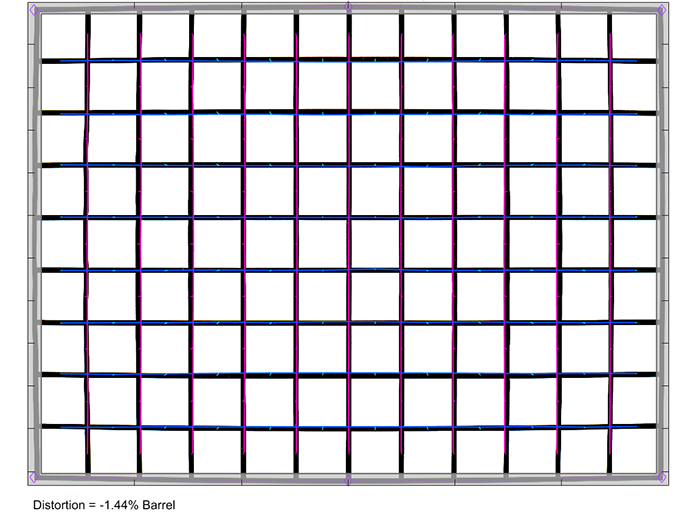
Vignetting
While the distortion figures are truly impressive, the same can’t be said about vignetting. However, we need to be fair here because all ultra-wide angle lenses suffer from so-called “natural” vignetting (also called the cos4 or “cosine fourth” law of illumination falloff). Even so, the RAW vignetting is on the high side at no less than 3.1EV (f-stops) at f/2. To put things into perspective again – that’s nothing special with full format systems. Stopping down to f/2.8 reduces this substantially, but it never gets better than ~1.9EV, even at smaller aperture settings. Image auto-correction can come to the rescue, though, and it cuts off about 1 EV (f-stop). You may ask yourself why Laowa didn’t kill the light falloff completely, but remember that this isn’t lossless because any signal amplification comes at the cost of extra sensor noise. A vignetting correction of around 1 EV (f-stop) is a quite reasonable limit.
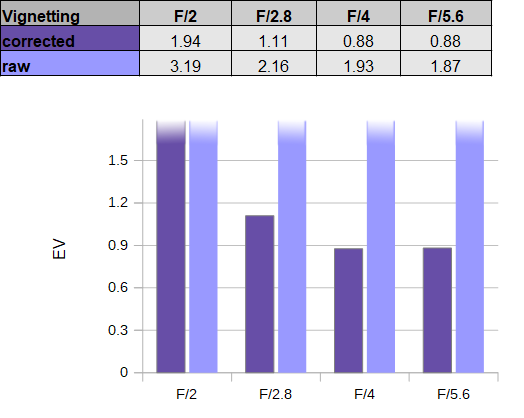
MTF (resolution)
Ultra-wide lenses are notoriously difficult beings when it comes to resolution. The difference between the center quality and the corners tends to be stark. However, despite the extreme focal length, the Laowa 6mm f/2 Zero-D MFT does a good job here.
The center is very sharp, even at f/2. The border quality is still impressively high, whereas the corners make it across the good mark, albeit just. Stopping down to f/2.8 boosts the quality across the image field. The center quality is now truly excellent, and the outer image field reaches very good results. Stopping down further only improves the depth-of-field from here. Typical for MFT, diffraction limits the image quality from about f/5.6 – and aperture settings smaller than f/8 should be avoided.
The centering quality of the tested sample was just soso (as so often). The field curvature is reasonably low.
Please note that the MTF results are not directly comparable across the different systems!
Below is a simplified summary of the formal findings. The chart shows line widths per picture height (LW/PH) which can be taken as a measure of sharpness. If you want to know more about the MTF50 figures, you may check out the corresponding Imatest Explanations
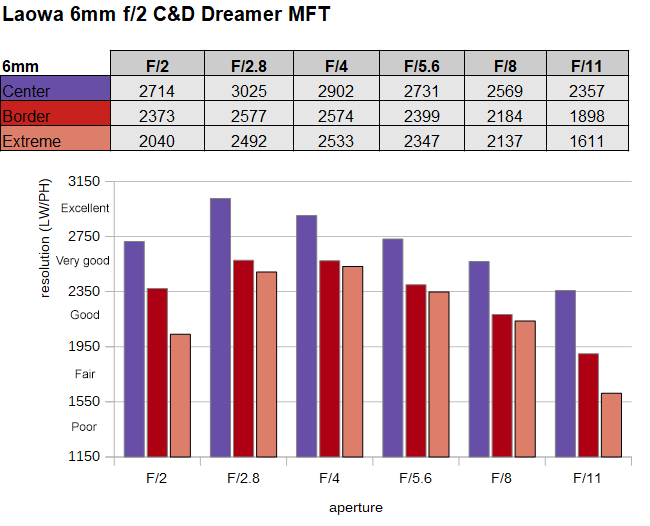
Chromatic Aberrations (CAs)
Lateral CAs (color shadows at the image borders) are somewhat noticeable at f/2 with an average pixel width of 1.3px at the image borders (and more than that in the corners). Stopping down reduces the issue, and it’s actually pretty good at medium aperture settings.

Sun Stars (experimental)
Below is s sequence of cropped images from f/2 all the way up to f/11 – illustrating the Sunstar behavior. Sunstars are an aperture effect that shows up if a bright light source is part of the scene (usually in night shots).
While most manufacturers implement 7+ rounded aperture blades in their lenses, Laowa made the deliberate decision to use just 5 straight blades. While this may result in edgy out-of-focus highlights other than at f/2, it’s probably reasonable to assume that if you are after a shallow depth-of-field, you will select f/2 anyway. Thus sticking to just 5 blades makes perfect sense because sun stars show up as soon as you stop down a little. You may notice that the (magnified) highlight is just a big blob at f/2 (=perfectly round aperture), whereas sun stars are forming straight from f/2.8 already. They “grow” the further you stop down, but you can still stay in the sweet spot range (f/2.8 to f/5.6) for really nice results.
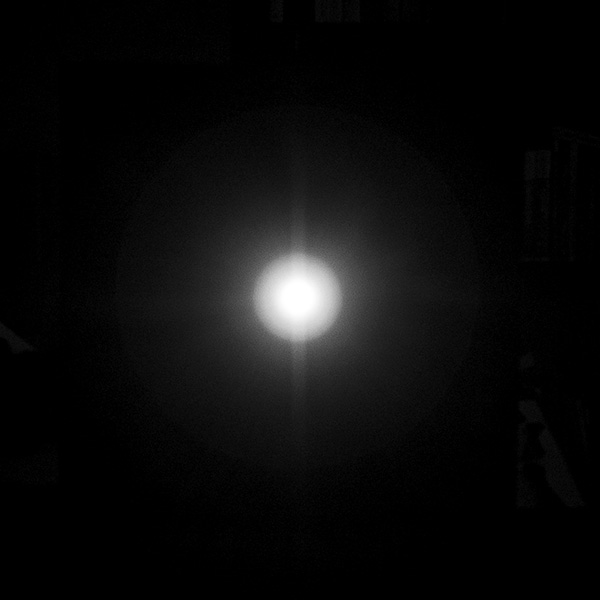

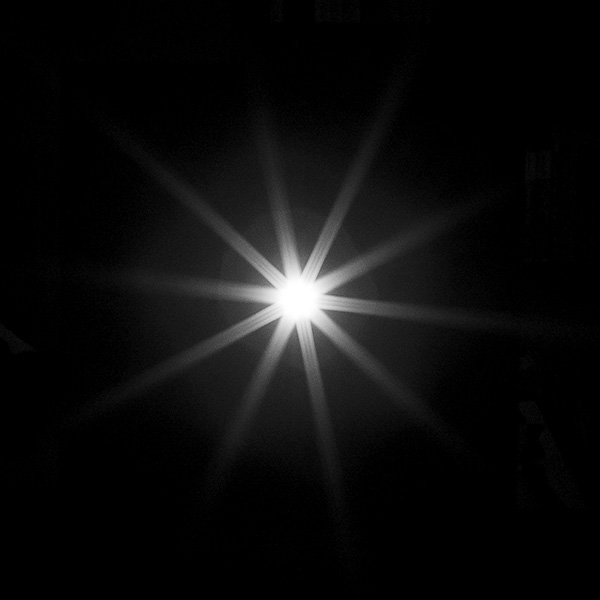
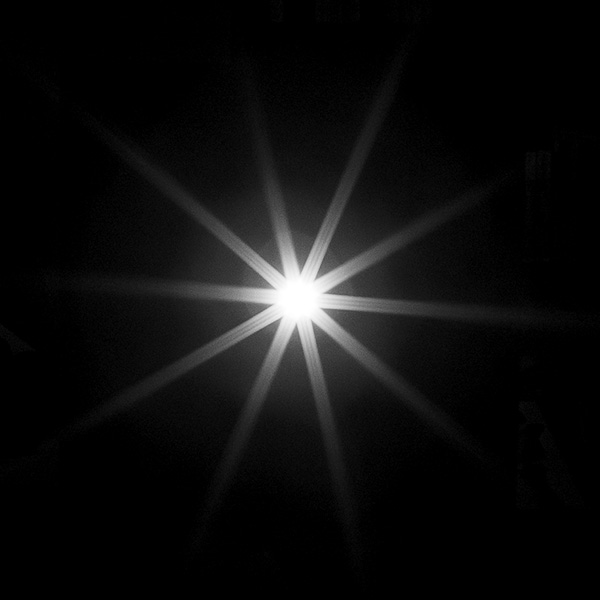
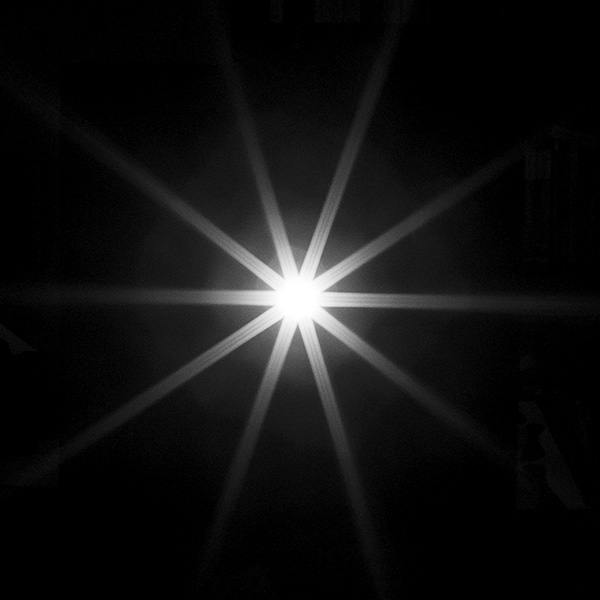

Sample Images
Competition
At the time of this review, the Laowa 6mm f/2 Zero-D MFT (shown to the left) is a unique lens within the MFT lineup. If we had to name two competitors, it’s probably Laowa’s own 7.5mm f/2 MFT (center), and the Meike 8mm f/2.8 MFT (to the right). They aren’t worlds apart in terms of performance, but the Meike has the edge in this row – but an 8mm lens is still not quite as wide, and as you can see below, it’s also a substantially bigger lens. And then there’s still the Panasonic/Leica 9mm DG Summilux f/1.7 -IF- it is wide enough for your purposes.
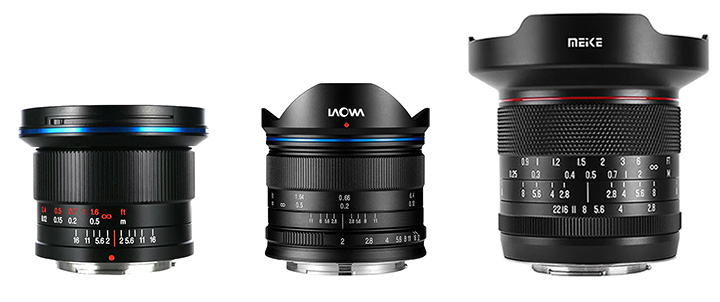
The Laowa 6mm f/2 Zero-D MFT is a pleasant surprise when looking at the whole package. We didn't really expect much from such an extreme 6mm lens, but the Loawa managed to produce very respectable, if not great results - both in the lab as well as during our shooting sessions. It is usable at f/2 with just a bit of corner softness and is sharp across the image field in the f/2.8 to f/5.6 range. If you own a higher megapixel MFT camera such as the GH6, you should probably prefer to stay around the f/4 mark - also because centering issues aren't unheard of (...). As promised by Laowa, image distortions are low for such a lens. The same can't be said about vignetting, but auto-correction is taming this issue to a manageable degree. Lateral CAs are a tad high at f/2 and f/2.8 but ease substantially at medium aperture settings. A true "highlight" (pun intended) is the lens's capability to render sun stars from f/2.8 onward.
The build quality of the Laowa lens is excellent. It's a tightly assembled, all-metal construction. The focus control ring is very smooth. On the downside, there is no weather-sealing, though. While the lens doesn't offer AF, it is electronically coupled thus, the camera can produce proper EXIF data plus in-camera stabilization, and you can also control the aperture via the camera's control dials.
A 6mm lens isn't everybody's darling and is clearly on the specialty side of things. However, if you love dramatic scenes or need something extreme for tight spaces (e.g. interiors), the Laowa may be the lens for you. It's also very reasonably priced and, despite its large max aperture, very compact and lightweight. Highly recommended!
-
Optical Quality (RAW)
-
Mechanical Quality
-
Price/Performance


